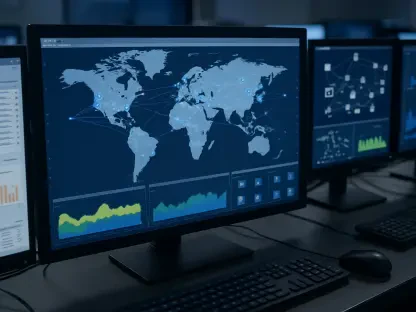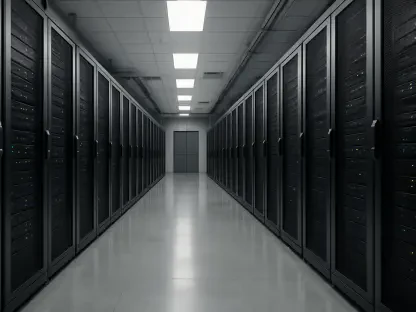Microsoft has made a significant advancement by establishing its first data center region in Chile, a move that further cements its influence in the digital transformation of the nation. Known as “Chile Central,” this region is strategically located in the Santiago metropolitan area and includes three independent sites that will collectively host multiple data centers. This development is aimed at integrating Chile more closely into Microsoft’s global cloud network while enhancing the digital infrastructure across the country. The establishment reflects Microsoft’s commitment to extending secure, scalable, and compliant cloud services to both public and private sector organizations in Chile and nearby regions, a critical step in bolstering the country’s global economic standing.
Economic Impact and Investment
This ambitious initiative by Microsoft is set to have a profound economic impact on Chile and the broader South American region. The direct economic injection into the Chilean market is estimated at $3.3 billion, which speaks volumes about the scale of Microsoft’s investment in the region. The expected financial influx is further highlighted by projections indicating that over the next four years, the initiative could generate approximately $35.3 billion in new revenue throughout South America. Such expansive capital allocation underscores the strategic importance of Chile as a hub within the Latin American digital landscape and positions it as a key player in advancing cloud infrastructure on the continent.
Job creation emerges as a notable aspect of this economic renaissance, with Microsoft projecting the creation of around 81,000 new jobs in Chile from this year through 2029. This potential for job growth not only emphasizes the transformative power of the data center but also hints at the operational scale and the diverse range of opportunities it is expected to bring to the region. As the data center becomes operational, local industries are likely to experience a surge in employment, fostering economic dynamism and enhancing the tech talent pool within Chile, which will have long-term benefits across sectors.
Technological and Environmental Initiatives
From a technological standpoint, the Chile Central data center takes significant steps toward sustainability, aligned with Microsoft’s broader environmental goals. A core feature of this setup is the ‘closed-loop, non-evaporative’ cooling system, designed to minimize water use while maintaining high operational efficiency. This innovative approach highlights Microsoft’s emphasis on reducing the environmental footprint of its data centers, an important aspect in today’s climate-conscious era. The integration of such technologies reinforces Microsoft’s commitment to sustainable operations, ensuring that the environmental impact is as minimal as possible while delivering cutting-edge cloud solutions.
Furthermore, the data center region supports Microsoft’s strategic vision for Latin America, as emphasized by Tito Arciniega, president of Microsoft Latin America. The infrastructure in Chile is seen as a catalyst for innovation and economic growth in the region, positioning Chilean companies to compete more effectively on the global stage. The availability of services such as Azure, Microsoft 365, Dynamics 365, and Power Platform within Chile ensures that data residency requirements are met, enhancing security and compliance for local enterprises. This localized service delivery underlines Microsoft’s commitment to providing tailored solutions that address specific regional needs, ultimately strengthening the technological fabric of the continent.
Expanding Global Presence
Microsoft’s expansion into Chile is part of a larger global strategy to advance its cloud and AI infrastructures, accentuating its presence in international markets such as Switzerland and Indonesia. This global outreach indicates a deliberate effort to bolster the company’s cloud capabilities and provide resilient, responsive digital services worldwide. The overarching goal of this strategy is to promote a seamless integration of local markets into the global digital ecosystem, enhancing connectivity and interoperability across different regions.
Such initiatives are a testament to Microsoft’s expansive network, which now includes over 400 data centers in more than 70 cloud regions globally. The establishment of the Chile Central data center is a pivotal addition to this network, embodying Microsoft’s sustained focus on innovation, expansion, and excellence in service delivery. As the company continues to grow, these regional data centers are crucial in supporting local industry advancements, sustainable practices, and comprehensive cloud solutions, thereby reinforcing Microsoft’s leadership in the cloud infrastructure domain.
Implications and Future Considerations
Microsoft has taken a significant leap forward by establishing its inaugural data center region in Chile, a development that strengthens its role in the nation’s digital transformation. Dubbed “Chile Central,” this new region is strategically positioned within Santiago’s metropolitan area, comprising three distinct sites that will collectively accommodate multiple data centers. This endeavor seeks to weave Chile more seamlessly into Microsoft’s extensive global cloud network, enhancing the country’s digital infrastructure. The move underscores Microsoft’s dedication to delivering secure, scalable, and compliant cloud services aimed at both public and private sector entities in Chile and its neighboring regions. Such an initiative is crucial for boosting Chile’s global economic presence. Microsoft’s expansion not only represents a commitment to technological advancement but also signifies a potential catalyst for economic growth, fostering innovation and accessibility in digital services across the region.









